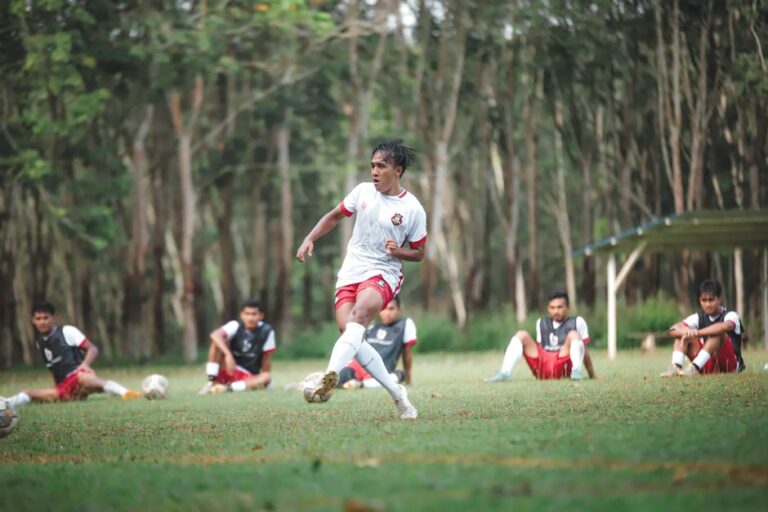Table of Contents
- The Grind of the Road: Private Competitors Like Kaleswari, Orange, VRL
- The Digital Shift: Uber, Ola, and The Ride-Sharing Menace
- The Iron Horse Rival: Indian Railways (South Central Railway)
- Financial Puzzles: Running a Fleet, Keeping the Lights On
- Modernizing the Old Beast: Apps, EVs, and the Smart Move
- The Human Element: Drivers, Conductors, and the Daily Grind
- What’s Next for TSRTC? Or, What I’m Watching
You know, the Telangana State Road Transport Corporation, TSRTC as most folks call it down here, people got ideas about it. Big ideas, some of ’em. Like it’s some kind of relic, right? Or the grand solution to everything. Myself, I just see buses. Dusty things, shiny new ones, sometimes. Depends on where you’re looking. Depends on the route too. This whole transport thing, it’s never just about getting from A to B. It’s about money, sure. Always is. It’s about the bloke waiting at the stop, sweating, hoping that bus shows up on time. Or at all.
Been in this game long enough to see things change. Or, more accurately, to see things pretend to change. TSRTC has been a fixture, like the Charminar, for decades. People complain about it. Then they hop on it. It’s part of the furniture, this whole operation. The backbone, they call it. And a worn-out backbone it is, sometimes.
The Grind of the Road: Private Competitors Like Kaleswari, Orange, VRL
See, a lot of folks, they think public transport just runs itself. Like water out of a tap. Not a chance, mate. It’s a fight out there. A proper dust-up. Take the private guys. You got your Kaleswari Travels, right? And Orange Tours & Travels. Then there’s VRL Travels, always pushing. These outfits, they don’t have unions breathing down their necks every other week. They don’t have to carry the weight of public service, loss-making routes, all that stuff. Their sole purpose? Make a buck. And they do. They’re quick, sometimes cheaper, got flashier buses, Wi-Fi that actually works. Most of the time, anyway.
You ask around, folks complain about the TSRTC buses, the old seats, the bumpy ride. Then they’ll tell you about the Orange bus they took last week. Plush, silent, got them there in a flash. That’s the competition, clear as day. It’s like a heavyweight bout, only one side’s got one arm tied behind its back, and it’s always the public one. TSRTC needs to figure out how to box clever. Fast. Or it’ll get knocked out. Not entirely, never entirely, but it’ll shrink. And shrinking means fewer jobs, fewer connections for the folks who really need ’em.
I remember back when, not so long ago actually, these private fellas were just small-time. Now? They got fleets. They got apps. My nephew, he wouldn’t even think about a TSRTC bus for a long-haul trip. He just opens the app, picks the fancy private one. Says it’s about comfort. Says it’s about choice. And he’s right. A lot of young people think that way now. They’ll grumble about prices later, but convenience first.
The Digital Shift: Uber, Ola, and The Ride-Sharing Menace
Then you got these new kids on the block, the ride-sharing mob. Uber, Ola. They just changed the game, plain and simple. No terminals, no schedules, no waiting in the blistering sun. You just tap, and a car shows up. Sometimes. Usually. When the rates ain’t surged, mind you.
How does TSRTC compete with that? You tell me. Someone asks me, “Why can’t TSRTC be more like Ola?” And I just stare at them. It’s apples and oranges, isn’t it? One’s a last-mile, on-demand thing, small scale. The other’s moving thousands, hundreds of thousands, of people a day, across an entire state. Different animals, completely. But the perception, see, that’s what matters to people. They want that ease. They want the immediate gratification. And TSRTC, by its very nature, can’t always deliver that. It’s a mass transit system. Not a bespoke chauffeur service.
But they’re trying. I’ve seen talk about improving their own app. And it needs it. Badly. Because if people can’t easily find a bus, track it, know if it’s running late, they’ll just bail. My daughter, she tried booking a ticket on the TSRTC app once. Gave up, called an Ola. Told me the interface was “from the Stone Age.” She exaggerates, always does. But you get the drift. The digital experience, that’s where the private players, the Ubers and Olas of the world, really hit TSRTC hard. They made it frictionless. TSRTC’s still got friction. A lot of it.
The Iron Horse Rival: Indian Railways (South Central Railway)
And don’t forget the trains. Indian Railways, specifically the South Central Railway that covers our patch. People sometimes forget about them when they talk about bus transport. But for longer distances, or certain corridors, the train is still king. Especially for bulk goods, or for folks who hate the thought of a long bus journey, cramped, full of bumps. A train can carry thousands. One bus, what, sixty? Seventy?
It’s not a direct competitor for every short city route, of course. But for inter-city travel, particularly between major hubs like Hyderabad, Warangal, Karimnagar, that’s where the competition gets fierce. You can stretch your legs. You can get a chai. You can even sleep, if you’re lucky. Prices, usually better too for longer hauls. TSRTC has to offer something distinct. Maybe faster travel on some routes, better frequency where trains are sparse. Or maybe just a bit more reliable on the last mile into smaller towns. That’s a niche they can still own.
Someone was saying the other day, “Why don’t they just merge TSRTC with the railways?” Daft idea, that. Completely different operations, different mandates, different history. Wouldn’t work. But the pressure from the rails, it’s real. Always has been.
Financial Puzzles: Running a Fleet, Keeping the Lights On
This whole thing boils down to cash, doesn’t it? Every time you hear about TSRTC, it’s usually about their finances. They’re deep in the red, last I checked. Salaries, fuel, maintenance. That’s a massive outlay. Imagine running 10,000 buses. Ten thousand! Keeping them on the road, buying new ones, hiring drivers, conductors, mechanics. It’s a beast of an operation.
They get subsidies, sometimes. Then the government changes, or the priorities shift, and the tap slows to a trickle. That’s the real tightrope walk. They’re supposed to be a public service, right? Take people to remote villages where no private bus will ever bother. Because there’s no profit in it. But then they also have to be efficient. And make money on the profitable routes. It’s a contradiction at the heart of their existence. You want service, you want profits. Pick one. You can’t have both, not really, not when the numbers are so big.
I often wonder if people actually grasp the sheer scale of the operation. The depots, the workshops, the fuel bills that would make your eyes water. Every tire, every drop of diesel. It adds up. Fast. And the fare hikes? People hate ’em. Shout, protest. But how else are they supposed to make ends meet? That’s a tough spot to be in. Real tough.
Modernizing the Old Beast: Apps, EVs, and the Smart Move
Now, they’re talking about modernization. Electric buses. Sounds good on paper, don’t it? Less pollution, quieter. But those things cost an arm and a leg. Charging infrastructure. New skills for the mechanics. It’s not just swapping out a diesel engine for a battery. It’s a complete overhaul of how they operate. And the word is, they’re looking at these Public-Private Partnerships, for the EVs, especially. Makes sense. Get someone else to shoulder some of that initial investment.
Their app, I mentioned it. They desperately need to make it user-friendly. Not just for booking, but for real-time tracking. “Where’s my bus?” That’s the most common question I hear about any bus service. If TSRTC can nail that, people will feel more comfortable. More in control. And maybe they’ll stop looking at their phone for an Uber.
They need to work on their online booking system. It’s a bit clunky, still. If I can book a flight from my phone in two minutes, why can’t I book a bus ticket just as fast? What’s interesting is, a lot of the older generation, they still prefer the physical counter. Cash in hand. But the younger ones, they live online. TSRTC has to cater to both. Not easy, that balancing act.
The Human Element: Drivers, Conductors, and the Daily Grind
We always talk about the buses, the money, the apps. But it’s the people, isn’t it? The thousands of drivers. The conductors. The depot staff. These are the folks out there, day in, day out, dealing with the public. They catch the flak when the bus is late. They deal with the complaints about the fare. They’re doing a tough job, long hours, sometimes thankless.
I’ve seen drivers, tired eyes, pulling long shifts. You think about the mental toll, the stress of navigating Hyderabad traffic, the endless routes. It’s not a fancy office job, is it? And the pay, it’s always a sore point. Unions always fighting for better wages, better conditions. Rightly so. If you want a reliable service, you need to treat the people running it reliably too.
Remember, a lot of these folks, they’ve been with TSRTC for decades. It’s their life. Their families depend on it. This isn’t just some nameless corporation. It’s thousands of lives. And when you read about the financial woes, the cutbacks, it’s those lives that get hit first. Always is.
What’s Next for TSRTC? Or, What I’m Watching
So, what’s the play here for 2025? I see a couple of things they need to focus on. They gotta improve reliability. Not just the schedule, but the breakdown rate. Nothing pisses off a commuter more than a bus dying in the middle of nowhere. It’s just true.
They need to differentiate their product. Why should someone take a TSRTC bus over a private one, or even a train? Price, for some. But others, maybe they value the frequency, the reach into remote areas, the sense of public ownership, even. Maybe it’s cleaner buses. Maybe it’s a smile from the conductor. Small things, sometimes, they make a big difference.
Will they ever be as slick as Uber or as comfortable as a long-distance private luxury bus? Probably not, entirely. They’re built different, their mandate is different. But they can certainly be better. A lot better. I expect to see more electric buses rolling out, slowly. More focus on that digital experience. A constant struggle with the bottom line. It’s the usual story, really. Just with bigger buses and a whole lot more passengers. And a government, watching every move, because it’s public money, right? Always is. It’s a tightrope walk. Always has been.
FAQs Weaved In:
Someone usually asks me, “Is TSRTC profitable?” My answer: Generally, no. Public transport corporations often operate at a loss because they prioritize public service over profit on many routes, especially in rural areas. They rely on government subsidies to cover the deficit.
“Why are TSRTC fares sometimes higher than private buses?” You know, that’s a common complaint. Often, it’s about overhead. TSRTC has a massive workforce, pension liabilities, and operates on fixed routes regardless of demand. Private operators can adjust routes and prices more flexibly to maximize profit, and sometimes cut corners on maintenance or staff welfare.
“Are they really getting new buses?” Yes, they are. They’ve been acquiring new buses, including some electric ones, as part of modernization efforts. It’s a slow process given the sheer number of vehicles they need. It costs a pretty penny, that.
“Can I track my TSRTC bus live?” Not as reliably or widely as you might hope yet. They’re working on improving their app for real-time tracking, but it’s still not fully implemented across the entire fleet or always accurate. That’s a big hurdle they gotta get over, soon.
“What about the staff, are they treated well?” Ah, that’s a thorny one, always has been. They’re government employees, in a way, with unions and all. Wages and working conditions are always a point of contention, like with any large public sector employer. They’ve had their share of strikes, their share of disputes. It’s a constant battle, for both sides. The daily grind.












